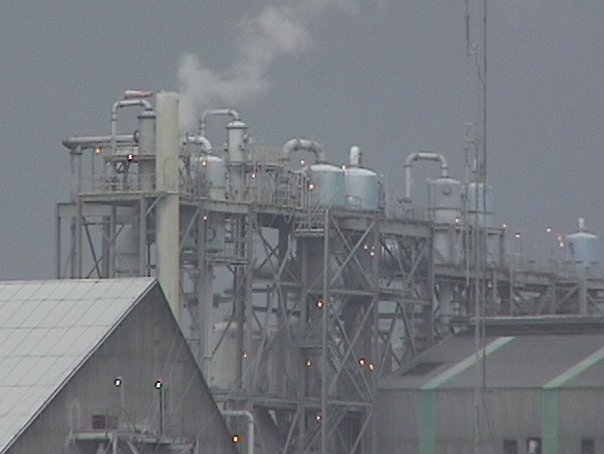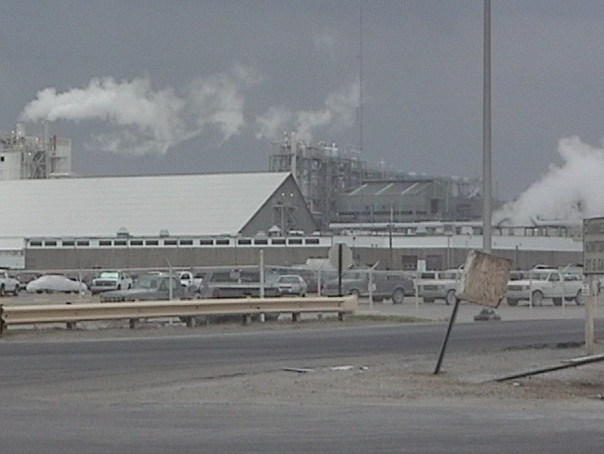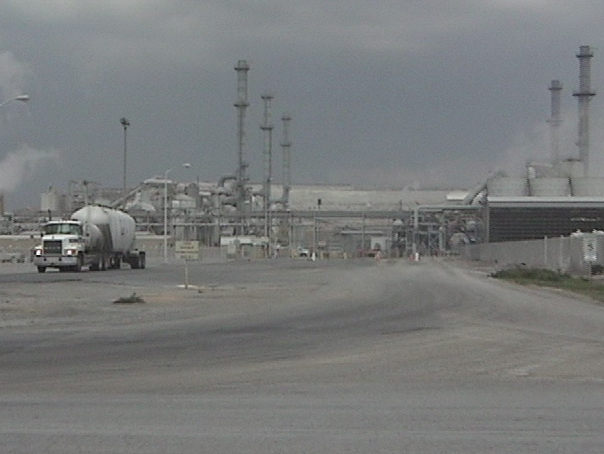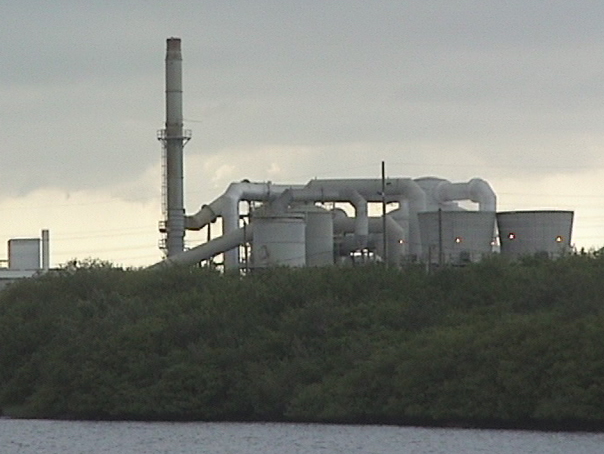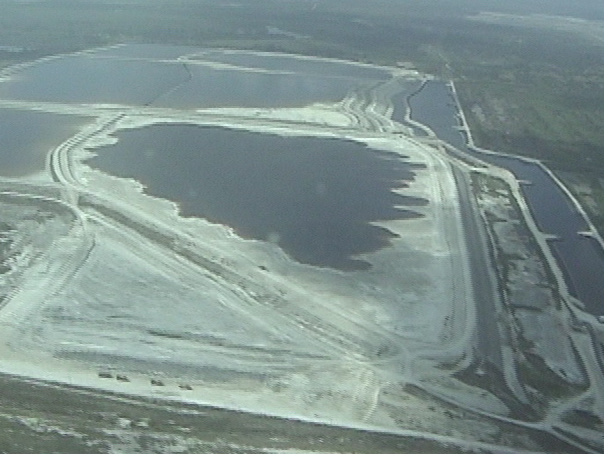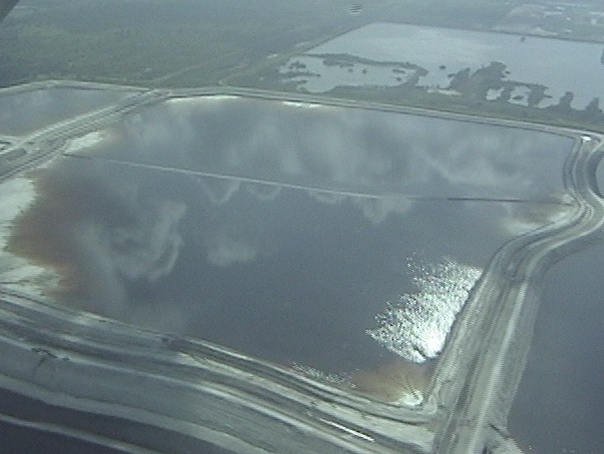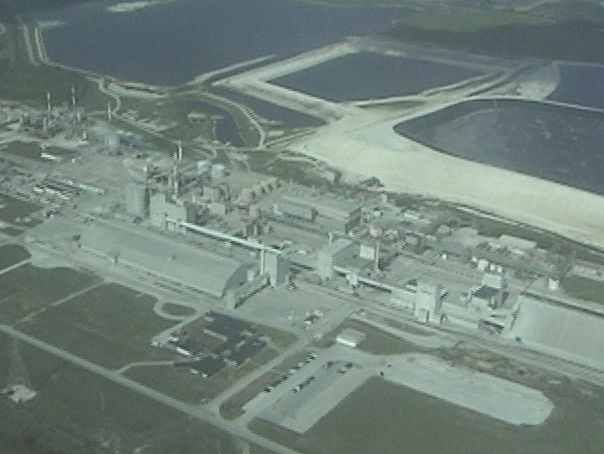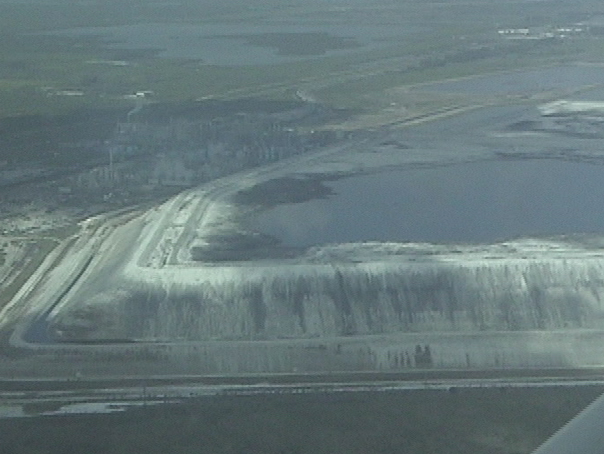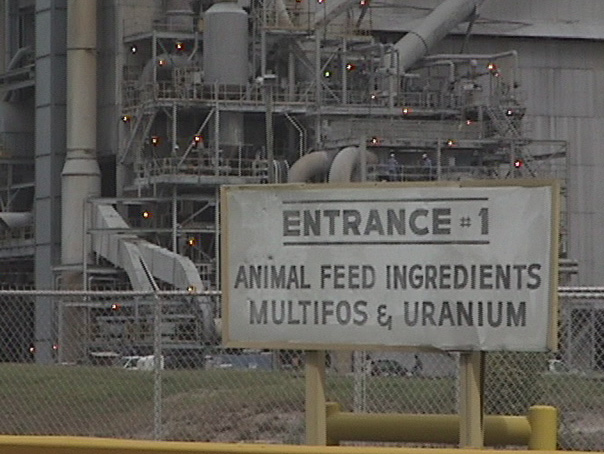
Phosphate ore can contain significant quantities of uranium. (IMC Agrico - New Wales Plant, Polk County, Florida)

State regulators' "worst nightmare" happened in June 1994 when a cavernous hole, 106 ft. wide by 185 ft. deep, opened in the center of an IMC-Agrico waste stack near Mulberry, Fla., like a scene out of Jules Verne's "Journey to the Center of the Earth." The sinkhole, shown in photo taken July 13, 1994, at IMC-Agrico's New Wales plant released 20.8 million pounds of liquid phosphoric acid into the ground below. The company was able to clean up the spill before it harmed the drinking water supply, regulators say. (AP Photo)
For information on the environmental impacts of the phosphate fertilizer industry, click here.

